The genre of hip-hop has been the site of political contest since its early conception, but every lyrical tradition has words whose meanings fit into its rhythms. When I first heard Enjoy Enjaami, I was aware that it would be a song of resistance, but it certainly offered more than what I had expected; the vivacity of the visuals was so striking that I had to play Enjoy Enjaami twice before I was able to turn my attention to the ‘deeper meaning’ of the lyrics.
In this article, in no way, do I proclaim to have understood all the sub-textual elements or even the motives behind the scenic representation in the music and the video of Enjoy Enjaami, but it is an amalgamation of all that I could gather from my own derivations. There is so much to uncover, the hints of so many cultural contexts that burst onto your screen when you press play. For a more appropriate analysis, I have focused more on the caste politics that the song aims to subvert.
Dalit art has always been a celebration of transgression of the regressive caste boundaries that have been imposed upon them. Rooted in rebellion, made by Dalits, relating to Dalit subjectivities, it is a ‘celluloid movement’ inspiring social-cultural criticism aiming to regain the agency that has been denied to them, to honour the cultural practices that they have been humiliated for. The mainstream ‘Indian’ music scene is, as Arivu himself states, Brahmanical and patriarchal, and is hostile to subaltern artists – incredibly notorious for its objectification of ‘fair and lovely’ (because colourism) women by dudes in expensive cars (and not to forget the city skyscrapers). So, when the video of Enjoy Enjaami opens with the lush green forest and drumbeats that are loud enough to shake the earth below them, it is a sense of freshness that engulfs the senses of the viewers.
Also read: In Conversation With Anti-Caste Artiste Arivu: Rapping For Equality
The mainstream ‘Indian’ music scene is, as Arivu himself states, Brahmanical and patriarchal, and is hostile to subaltern artists – incredibly notorious for its objectification of ‘fair and lovely’ (because colourism) women by dudes in expensive cars (and not to forget the city skyscrapers). So, when the video of Enjoy Enjaami opens with the lush green forest and drumbeats that are loud enough to shake the earth below them, it is a sense of freshness that engulfs the senses of the viewers.
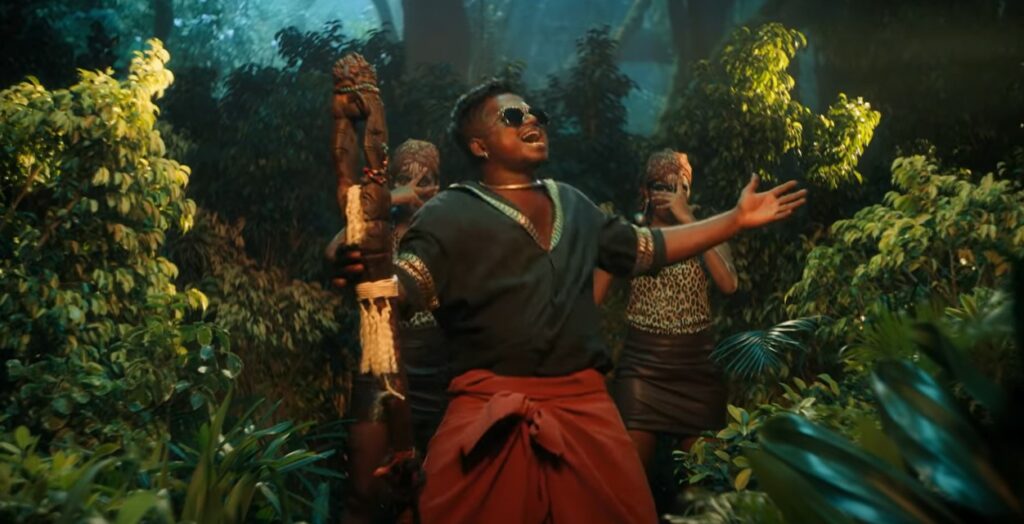
The lyrics of Enjoy Enjaami steps away from the isolated anthropomorphised ideals of humanity that we have become so used to – “Nayi nari poonaikundhan indha erikkolam kooda sondhammadi” (the lakes and ponds belongs to the dogs, foxes and cats too) – emphasises the equality that is inherent in nature but is deteriorated by exploitation by those with vested interests to the point that we have trouble acknowledging the fact that humans are supposed to be a part of nature, not an entirely different entity.
The land we live on, that we eat from, was created by overtime fertilization provided by the excretions of animals that came before us. The aesthetic of the words and their portrayal interrogates our conceptions of internalised hierarchy that we, in our contemporary city lives, have so vehemently incorporated. Humans are not the central character in this narrative, they exist alongside nature.
In the scene in Enjoy Enjaami, wherein a hand is reaching out to the soil, that we later see another hand grab, is probably symbolic of two things: Arivu was influenced from the stories of his own ancestry, immigrant tea plantation workers from Sri Lanka, who came back to their home in India after colonialisation, and found that their lands had been taken away. The groves of forests that had been their home was now barred from quenching their ‘thirst’ – “Nan anju maram valarthen / Azhagana thottam vachchen / Thottam sezhithalum en thonda nanaiyalaye” (I planted five trees / Nurtured a beautiful garden / My garden is flourishing, Yet my throat remains dry) – a thirst symbolic of all that they had been yearning for.
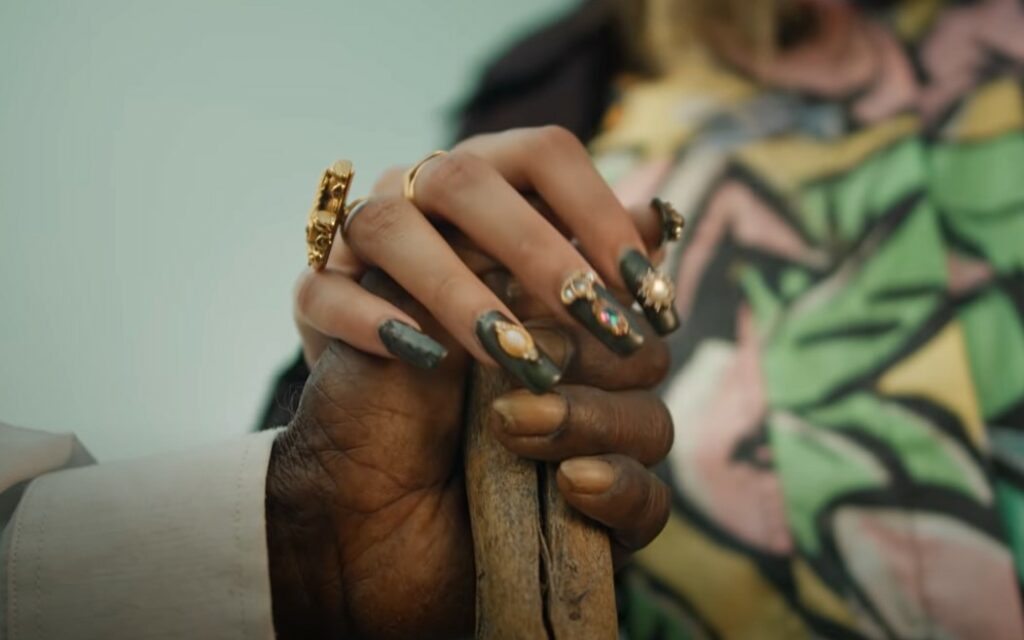
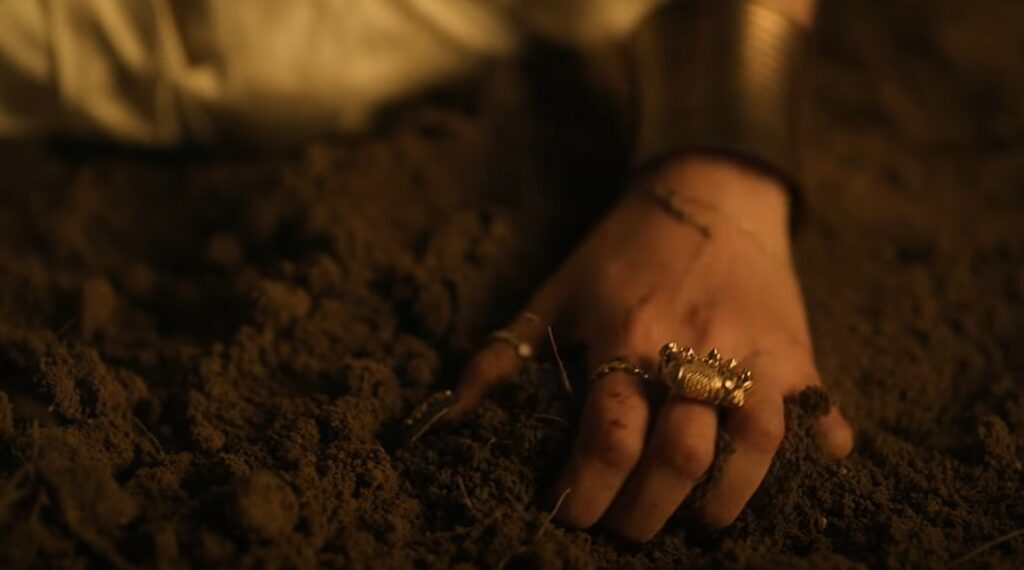
I am especially drawn to what is presumably Dhee’s hand, decked out in golden rings (with an elephant, resonating with the invitation of riding the elephants, “together as one”) reaching out and grabbing the soil, and then in a scene later, holding an elder’s hand. We know that lower-caste people have been kept away from wearing jewellery and expensive clothes by traditional caste conceptions. Combining this with Ananya Banerjee’s observation that jewellery is more than just simply an accessory, that they are heirlooms of families and their traditions – “a ‘hand me down’ of our elder’s blessings” – I see this as Enjoy Enjaami’s clear attempt at establishing their legacy and being unapologetic of their traditions. Together, it seems as if to say: we can give back this earth to who it really belonged to – all of us.
Also subversive, in my opinion, is the presence of artists and the dancers that are so visually beautiful in Enjoy Enjaami. I want to take a full moment to comment on the casting of people with darker skin colour, which mainstream Indian media has stereotypically assigned only to people of lower castes and is so openly biased against – it has become almost a caste marker: “my dark skin tone makes most of them uncomfortable” Arivu says in an interview.
The blooming hands used all throughout Enjoy Enjaami‘s video, traditionally used in ‘classical dances’ to signify beauty, in addition to directly challenging the stereotype of handsomeness that is accorded to the privileged caste prototype only; seems to be a nod at the history of how local dances have been “cleansed” or have come under the influence of samskriti (refinement) to suit the narrative of ‘pure’ upper caste traditions: the formation of a canonical ‘classical dance’ itself is rooted in Sanskritisation.
The fabric ‘draped on a Dalit body’ is also a site of caste politics. Clothing is directly associated with the construct of communities in our mind: for instance, in the Swadeshi moment, a turn to Khadi was symbolic of a larger political movement. As Emma Tarlo pointed out in a paper published in 1996, Indian dress codes were hence “highly diversified according to caste, class, religion, occupation, education, region and politics.” While jewellery is one aspect of it, there is also the fact that the oppressed communities were often forced into wearing ragged clothes in order to appear non-threatening to the oppressors, and were deprived from looking ‘clean’ and ‘well-dressed.’ The oscillation between modern and traditional clothing in Enjoy Enjaami (not just by the two singers, but even by the local elderly woman who wears the exquisite pink saree) can be seen as symbolic of the larger narrative of (re)gaining power: while ‘modernity’ became a blanket-space that allowed the oppressed to be able to transgress these regulations kept in place, ‘shedding’ them is a documentation of the shift in power dynamics that takes place.
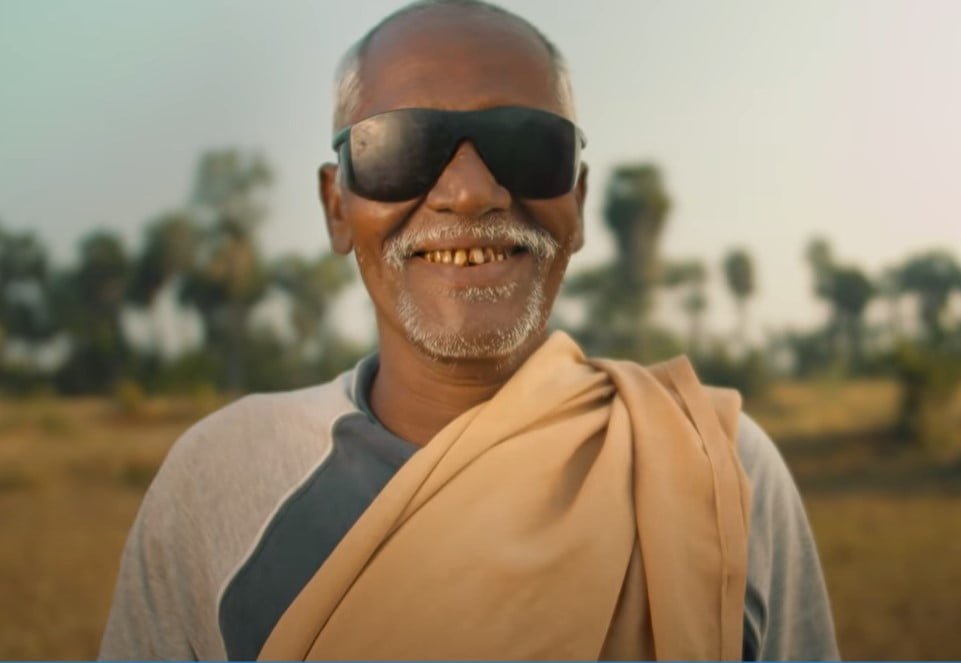
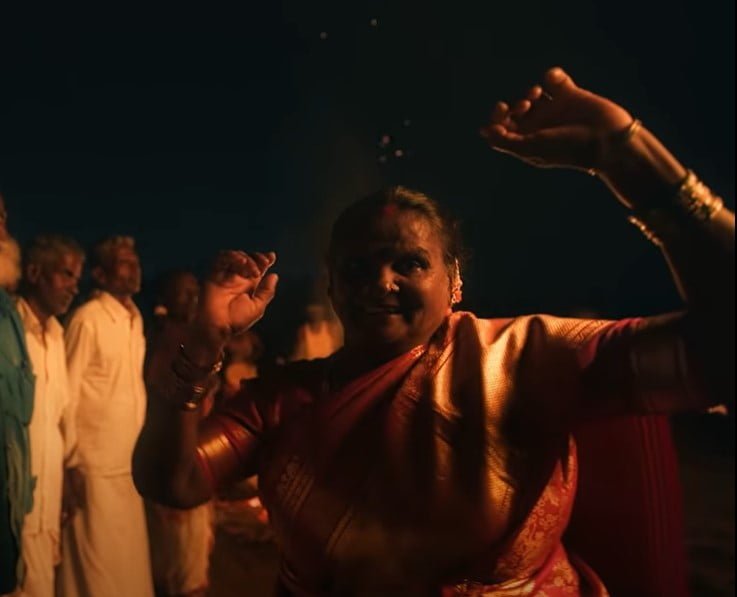
Moreover, the fact that all the people who were denied their soil are still depicted as smiling is a slap-in the-face for the otherwise media representation of them as characters in highly dramatised ‘sob-story’. They smile in the hopeful open air and they can dance carefree under the rain shower. They exist in their celebrations, which deserve just as much screen-time. This inclusion in aesthetics reminds me of P.K. Nayar’s “Social Memory”: when they sing this song that is derived from their cultures, accompanied with bodies that make the prejudiced uncomfortable, they insert their stories alongside the orthodox, they enable themselves to write their own presentation of themselves in front of us.
While the lyrics do enshrine the stories that have not been heard, the music doubles the impact. Dalits and tribal communities have a rich history of oral narratives. The “unique and sonorous beat” of clapping and the resounding banging of a drum, the tone and the modulation of the voice, so different from the accepted “Brahmanical tonality,” is poignant of how much we miss out on. Ironically enough, the song that we seem to be “grooving to” is derived from Arivu’s characteristic “Oppari” (funeral song) art with the beats of parai, a drum that has long been known as the instrument played only by Dalits. The melancholia in the Enjoy Enjaami and the lamenting segment is an intense fusion of the folk song traditions with the modern. The adaptation is not a ‘modernisation,’ it seems to be characteristic of adaptive survival strategies presented in traditional poetic dictions.
Also read: Dalit Art: An Endeavour In Exploring Notions Of Caste Boundaries
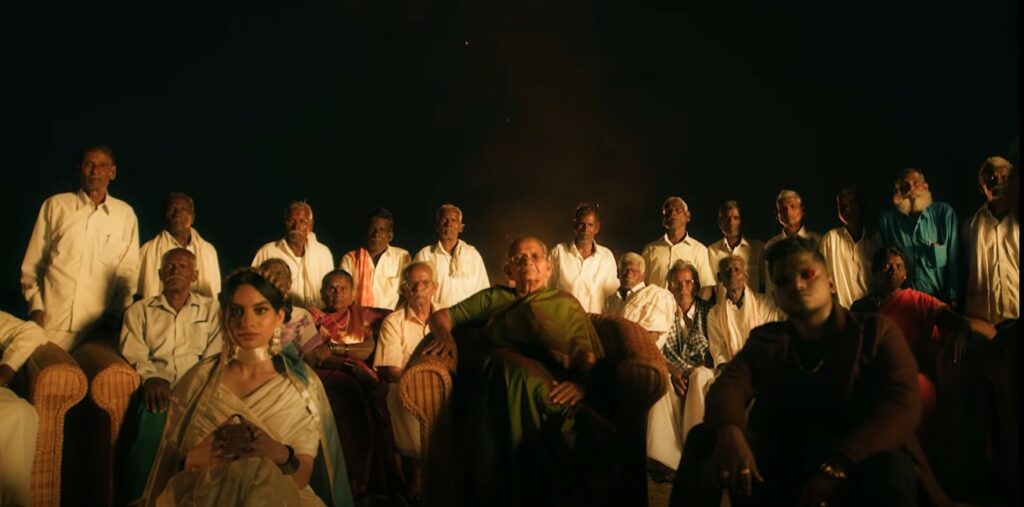
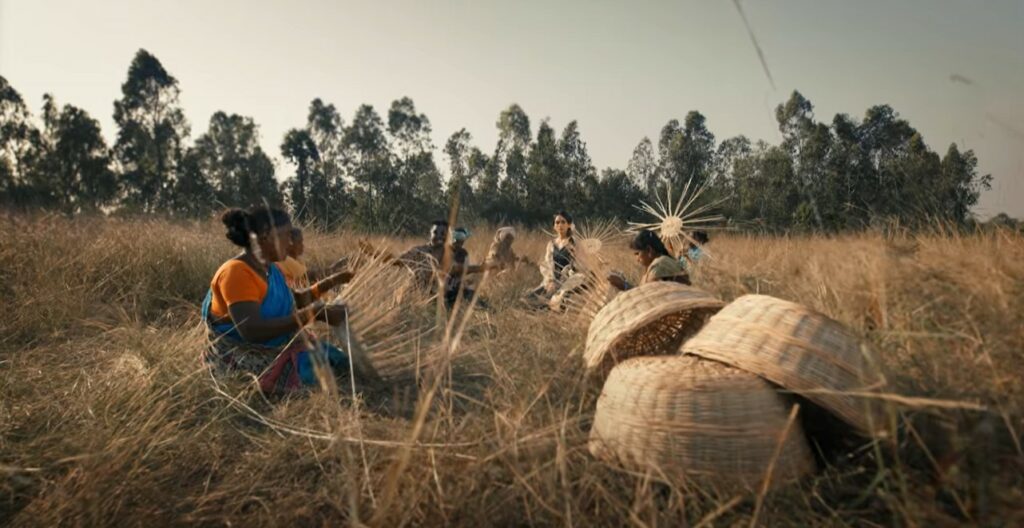
The ending shot of Arivu’s grandmother, who had been telling the grandson this story, sitting on a throne made from the same weaving technique of the community shown beforehand instead of the gilded throne that Dhee sat on, is an interesting addition. There seems to be a focus on going back to communal values, or rather, to the support of our community as a whole: as if segmented, we cannot survive.
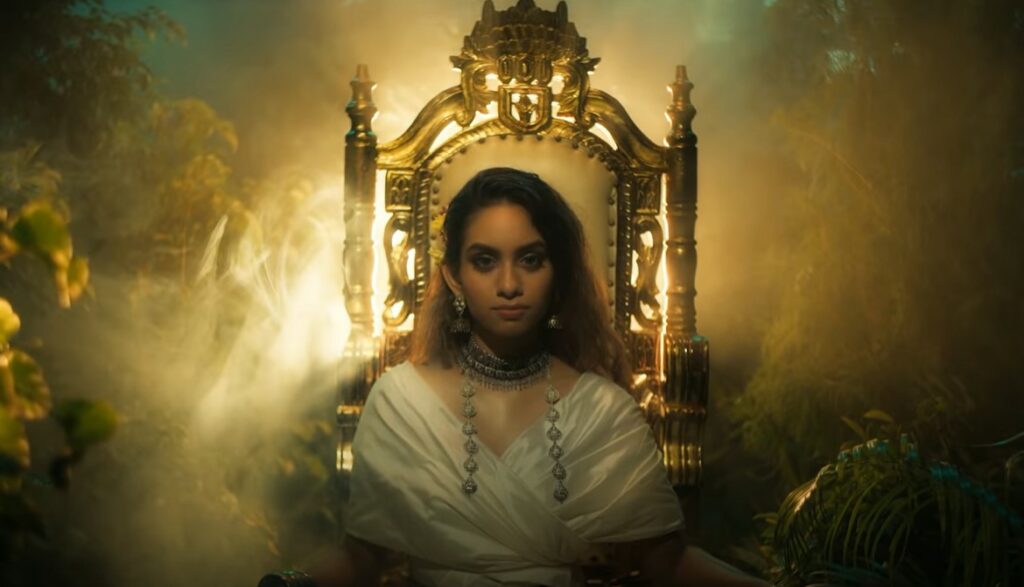
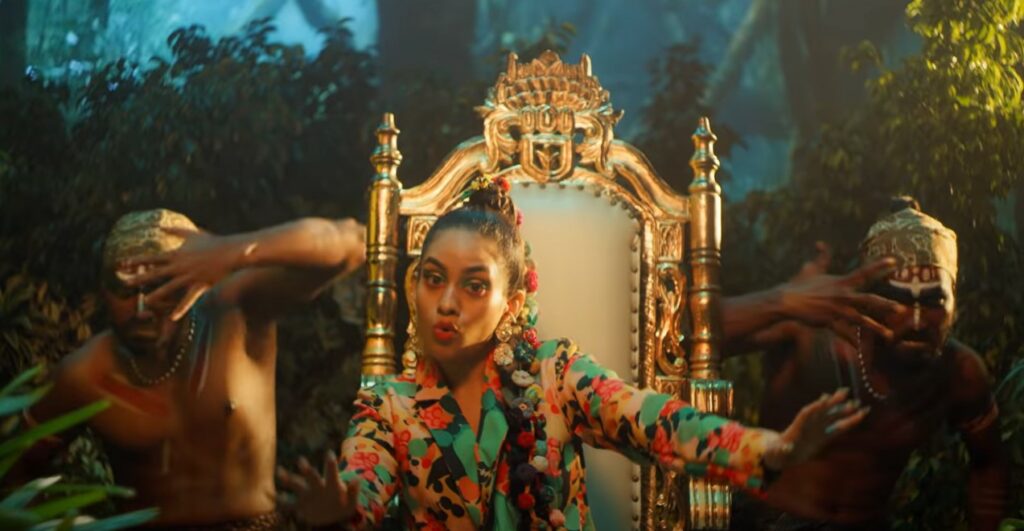
In presenting traditions that even present-day society mocks and rejects, and hardly considers respectable, Enjoy Enjaami intrudes on our regressive preconceptions and shows what we have turned a blind eye to. But it is not a bitter recollection, it is a call to come together.
Enjoy Enjaami also seems to be indicative of who holds the thread of community relationships in most traditions: women. That both the thrones have women sitting on them may be a recognition of how the job of passing down familial legacies falls down to women and that too, in communal spaces (here, around a bonfire, it seems). From Aunt Sue’s stories, to Joy Harjo’s kitchen table, women are given the responsibility of cultivating traditions. It seems only apt that this is finally recognised as the grandmother appears behind them, the root source identified and honoured.
In presenting traditions that even present-day society mocks and rejects, and hardly considers respectable, Enjoy Enjaami intrudes on our regressive preconceptions and shows what we have turned a blind eye to. But it is not a bitter recollection, it is a call to come together. There is no divide between an ‘us’ and an ‘other,’ the only characterisation it extends to us is a warm reception. It is, of course, up to us to consider Enjoy Enjaami either as a ‘catchy’ and ‘viral song’ or as the start of the representation that we owe to all the communities mainstream media has ignored for so long.
Featured image source: Indulge Express
About the author(s)
Anvi is a student of English literature who finds it condescending to divide literature into high and low, guiltlessly enjoys mangas, and uses her literary criticism skills to analyse them. She also likes to fight the patriarchy one at a time by hoping to spread more awareness about it.
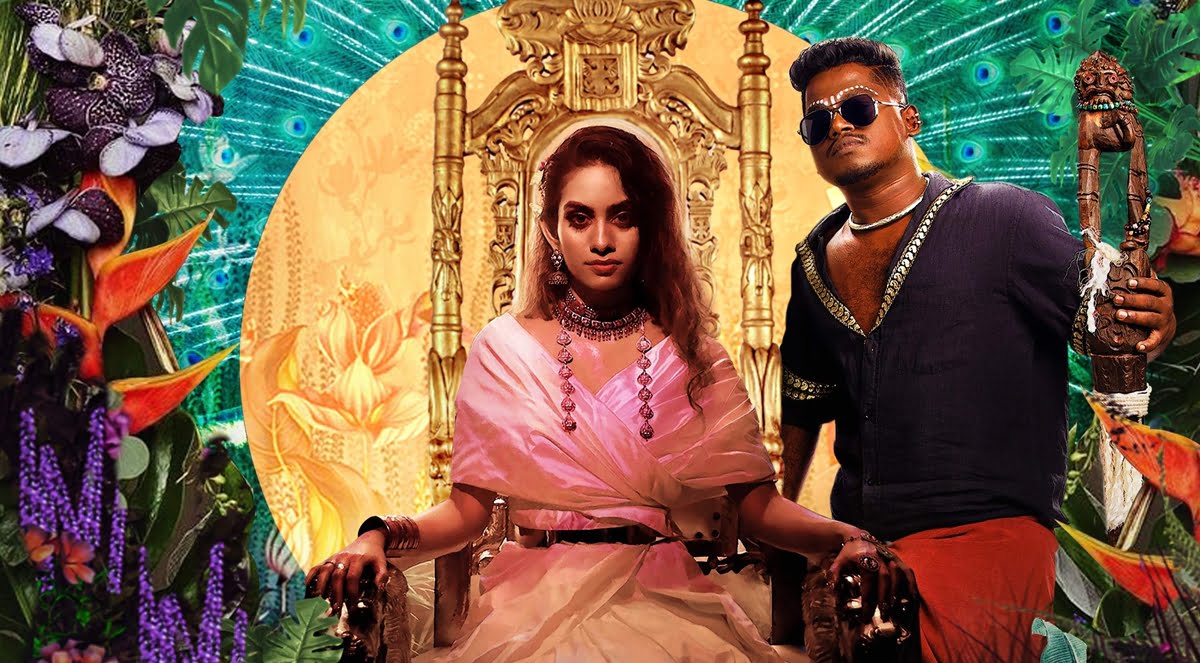




♥️